1/15/2020
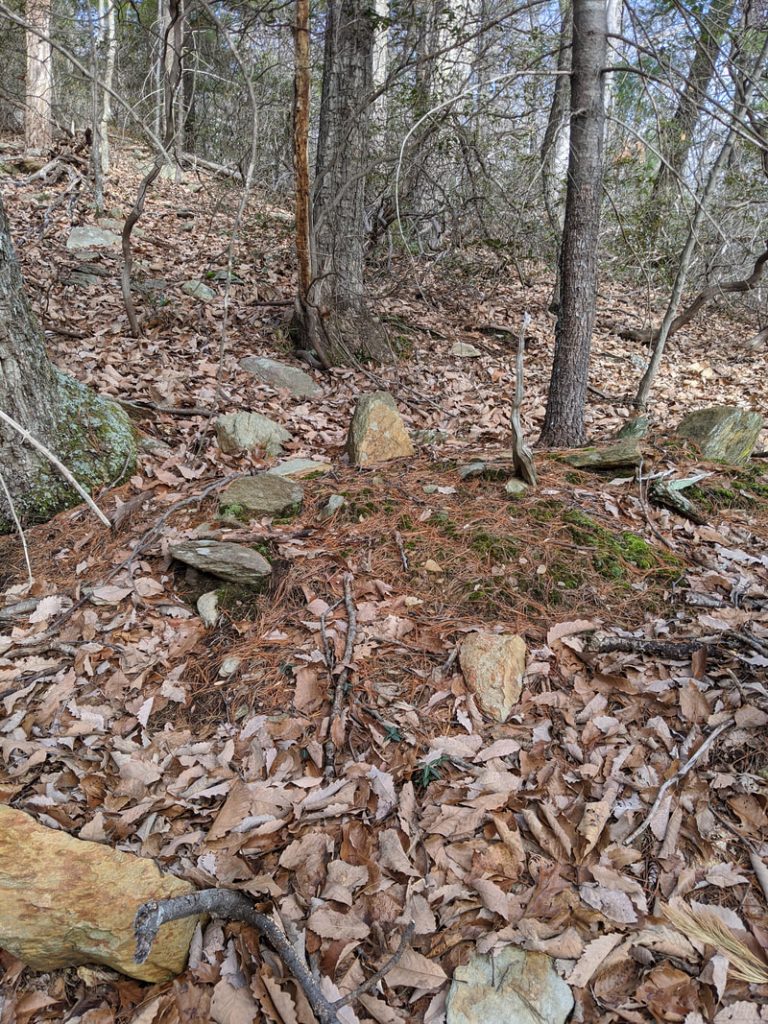
The title is a reference to “The Hidden Life of Trees” by Peter Wohlleben which compares trees to social beings based on factors not noticed by most of us. This post is about the visible life and death of trees in Nelson County Virginia.
Walking up the knob behind our house this week (January 2020) and seeing the image above, I might have wondered if I had wandered into an old graveyard. The uptilted stone and the weathered earth mound are consistent with a human grave. Upon further inspection I found this extending from the mound:
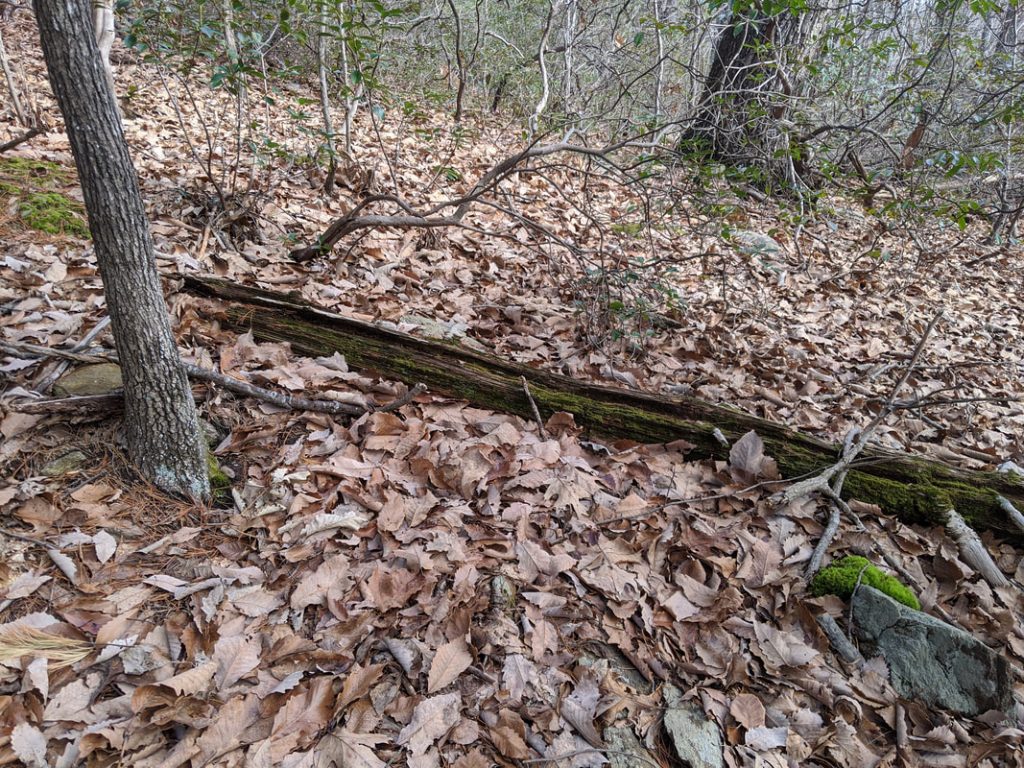
This is a tree grave! Many years ago this tree gave up the ghost or was pushed over and now lies on the forest floor among the leaf litter that it contributed to lo those many years ago. The forces of weather, mainly rain, have partially distributed the root ball of the tree. Behind the mound there is a trench that the soil and roots of the root ball were lifted out of. Sometimes the evidence of a fallen tree are obscured and I will walk into the cavity behind the mound before I see the remains of the trunk extending from it. The uplifted stone is a common sight in the woods also. When the tree grew into and among the rocks they became part of the root ball. As the tree goes over and the rocks are uplifted sometimes they are left in the configuration of a footstone of a grave. It is hard to tell what kind of tree this was. A good guess would be the long-lasting rot resistant Black Locust (Robinia pseudoacacia).

I came upon this calling card of an eastern coyote (Canis latrans). The size of the scat is consistent and it contains hairs. It was left prominently on a rock as a To Whom it May Concern message: This is my territory! I did not see any coyotes today, or any other mammals after we left the yard squirrels behind. I did see evidence of two other predators in the form of scratching trees. The eastern bobcat (Lynx rufus rufus) scratches were low to the ground, as expected for their size. The black bear (Ursus americanus) scratches were as high as my head! See below! All of these signs are for marking territory.
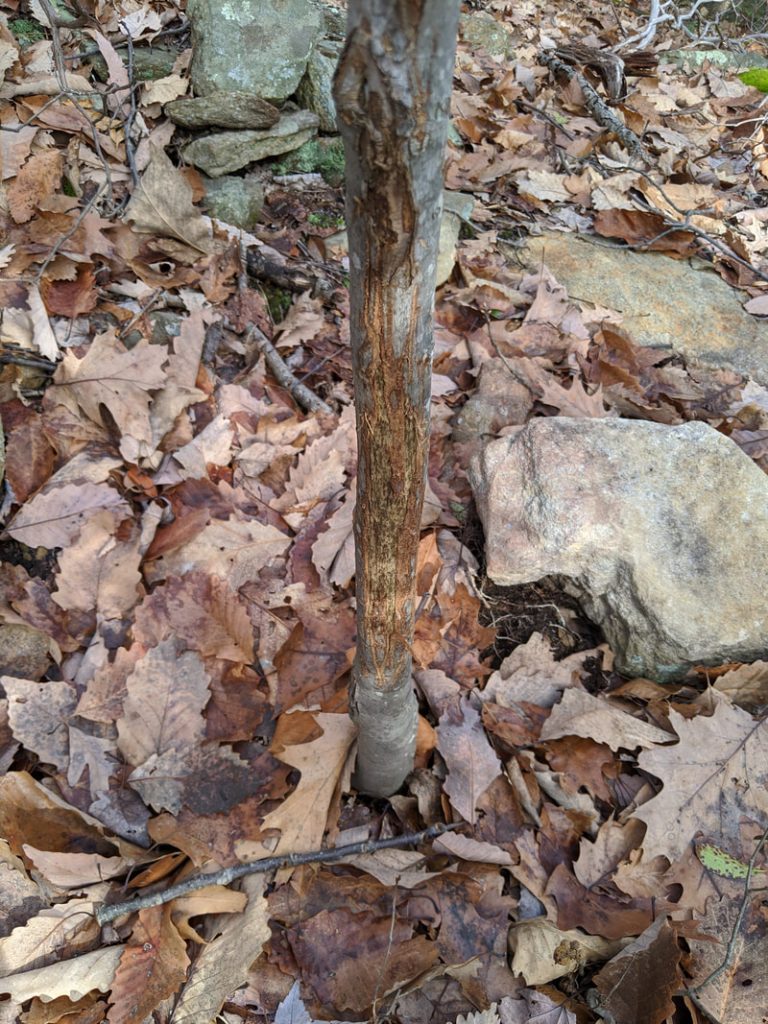
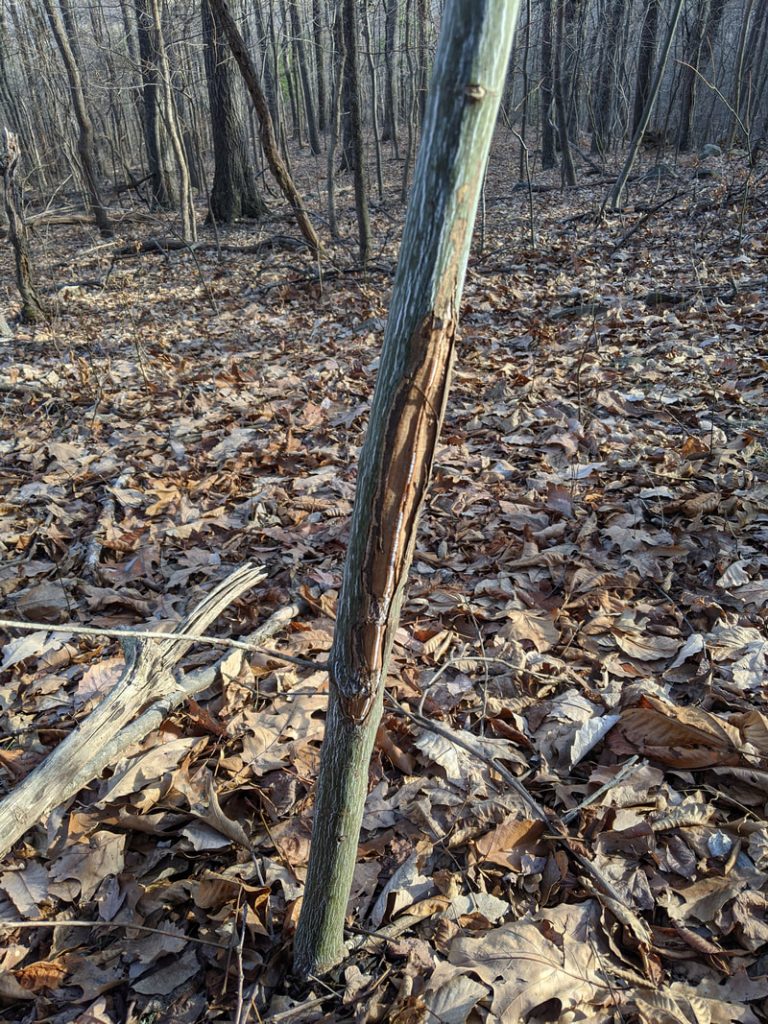
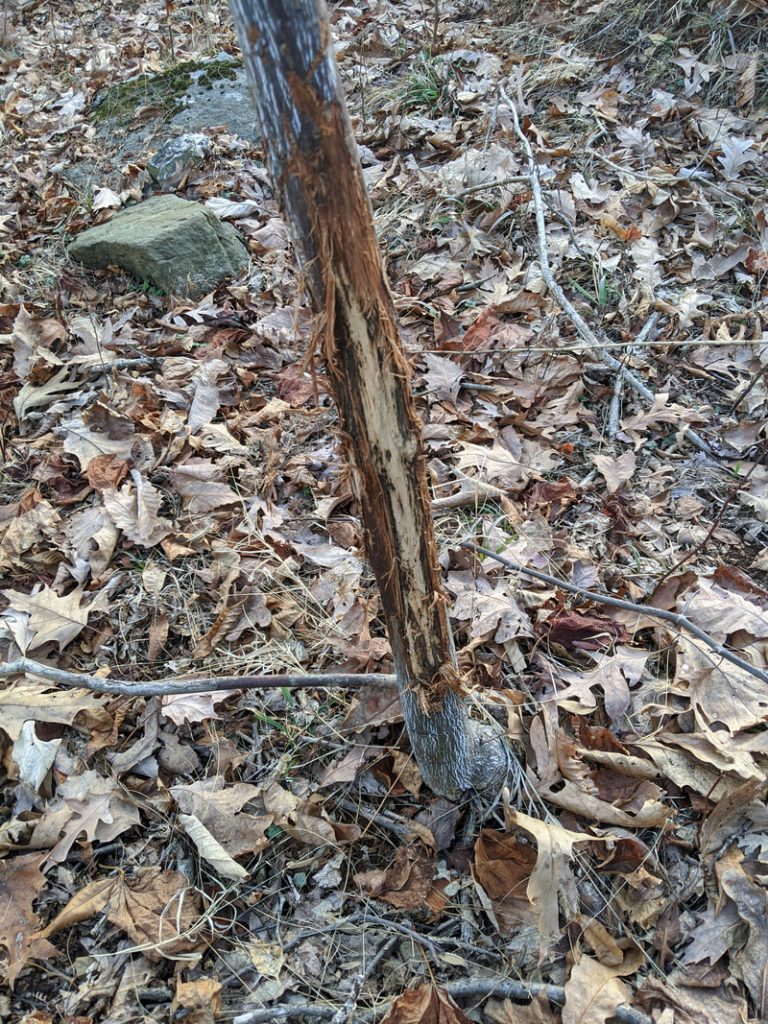
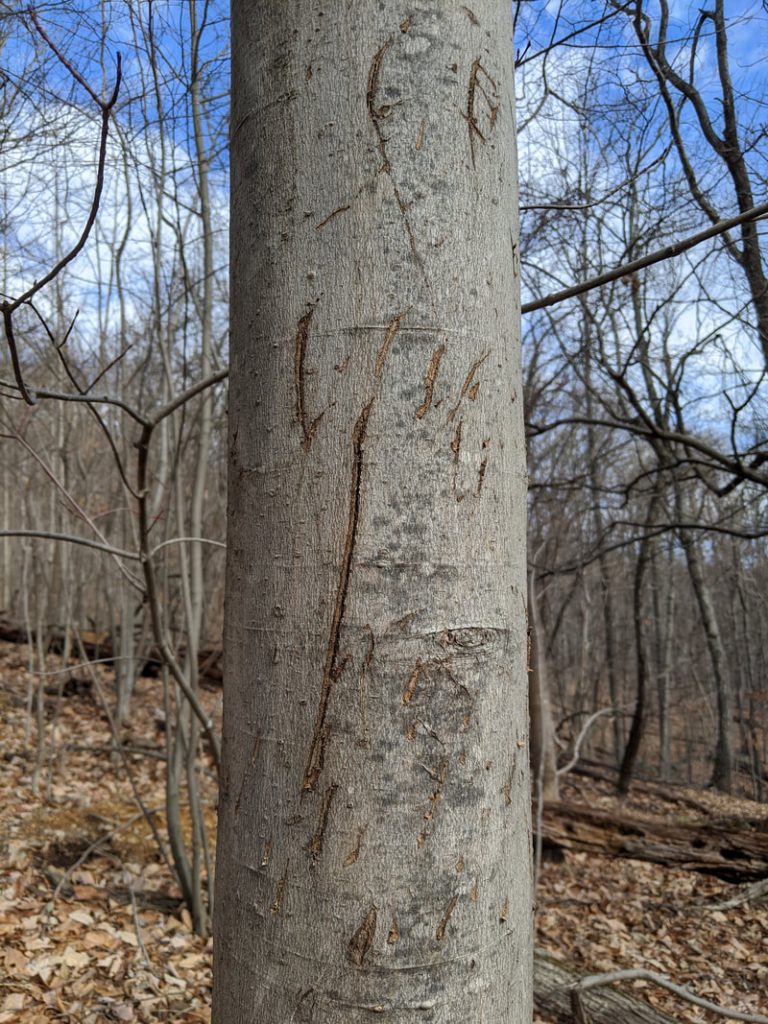
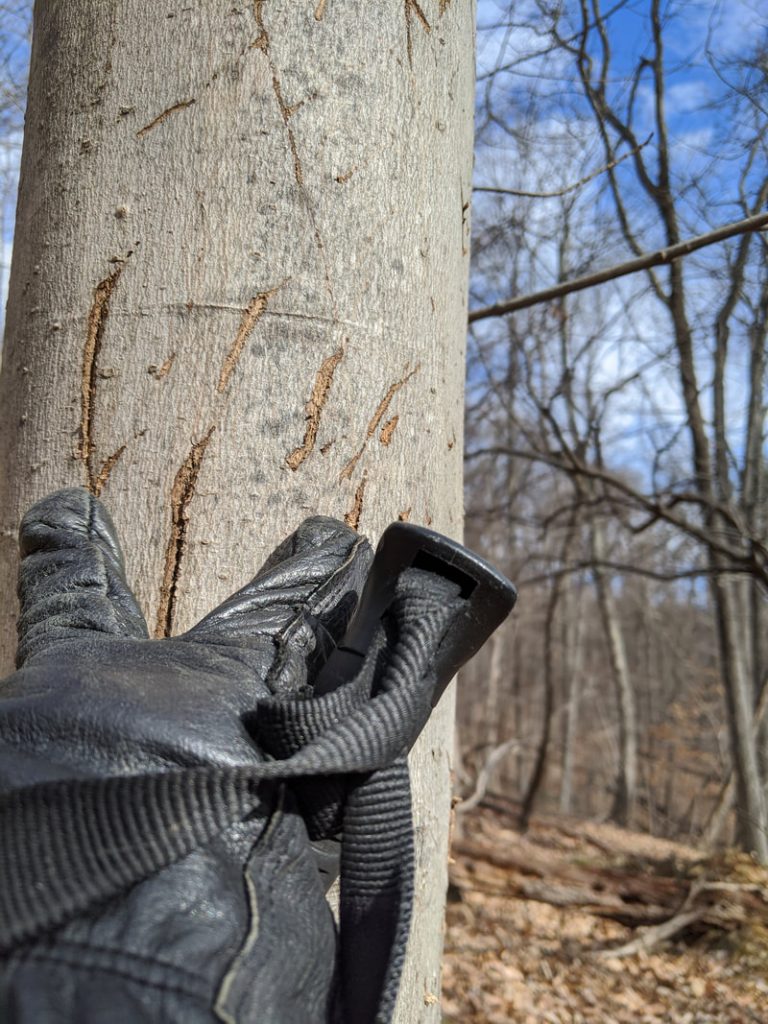
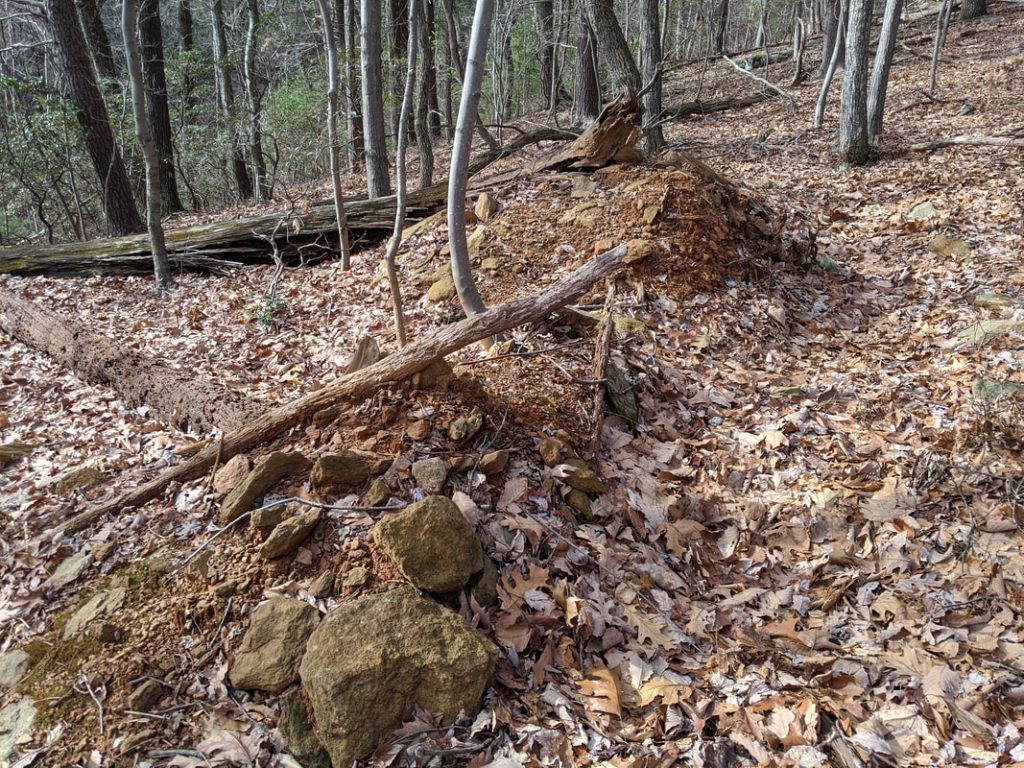
Back to Tree Root Balls! This is a typical example of the depression behind the mound. In this case two trees went down. Was it the same storm? Too much time as passed to know. The intersecting trunks gives one license to speculate that perhaps one falling tree took its forest-mate with it.
Further up the hill we find the opposite effect. These trees did not leave nearly as much or in one case any noticeable root ball mound. I suspect these trees died rather than being pushed down by wind or by other falling trees. Perhaps a root disease killed it and then it fell over. When all of the roots had shuffled of this mortal coil, their attachments to the soil had long since failed.
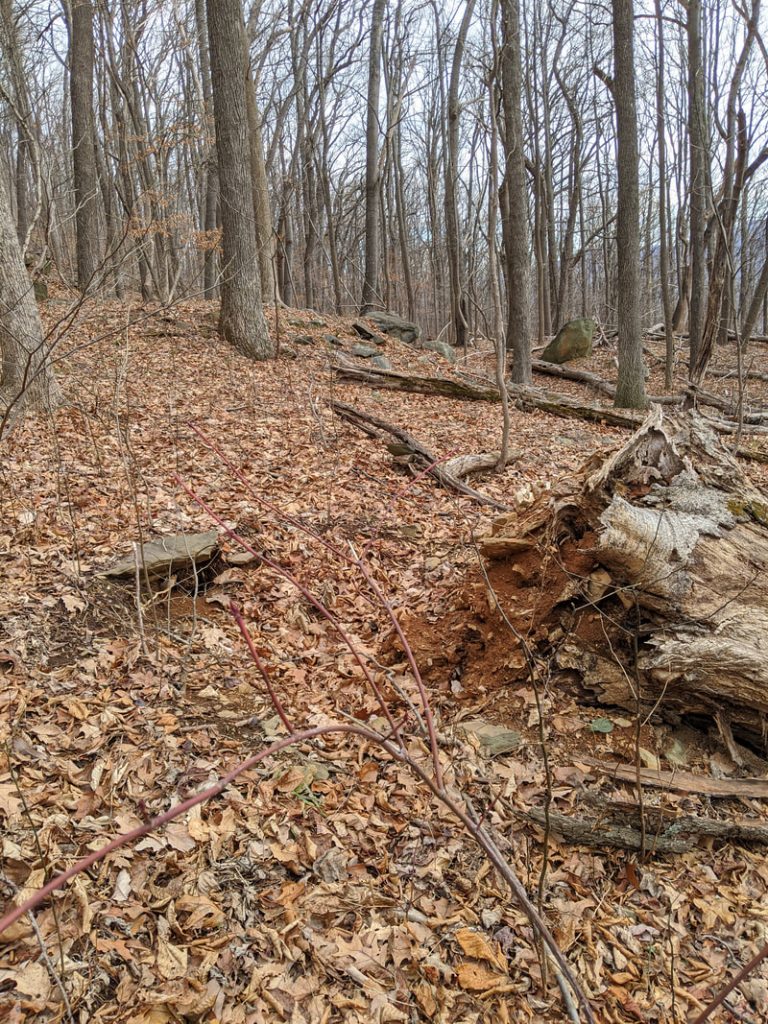
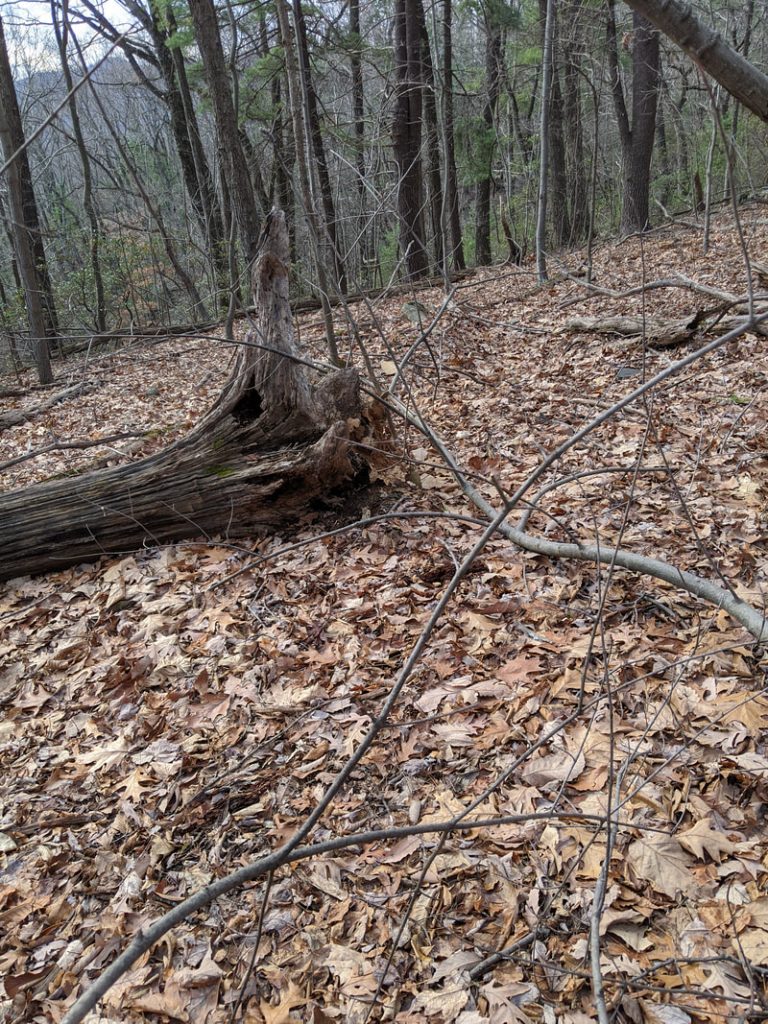
A healthy tree, on the other hand, can create a massive root ball when it is toppled by wind. The forest canopy and the overstory is the mass of limbs and leaves at the top of the dominant trees (in our case, oaks, maples, and hickory). The effect of this biologic mass in the spring and summer is to block sunlight to the seedlings and saplings on the forest floor and understory. When a large tree goes down it creates habitat for animals in the root ball and opens the forest canopy to allow the next generation of trees to thrive and grow. Here is where an animal has dug a protected refuge into the root ball. The young trees in the last photo are getting their chance to shine and will have a chance to be the overstory.
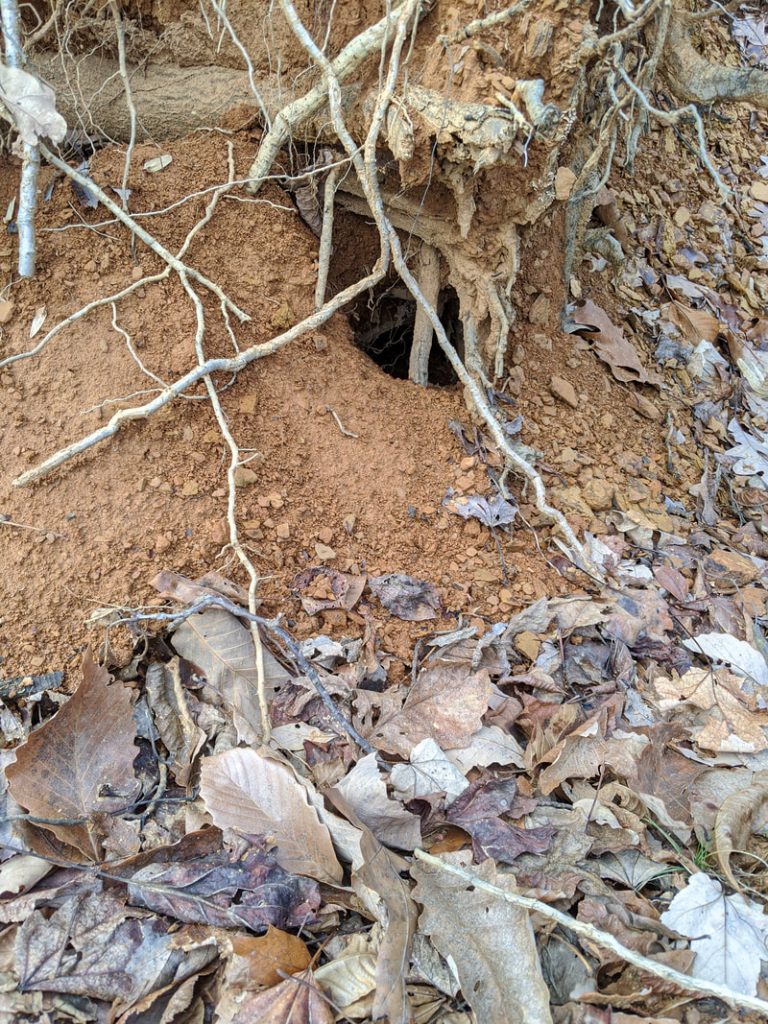
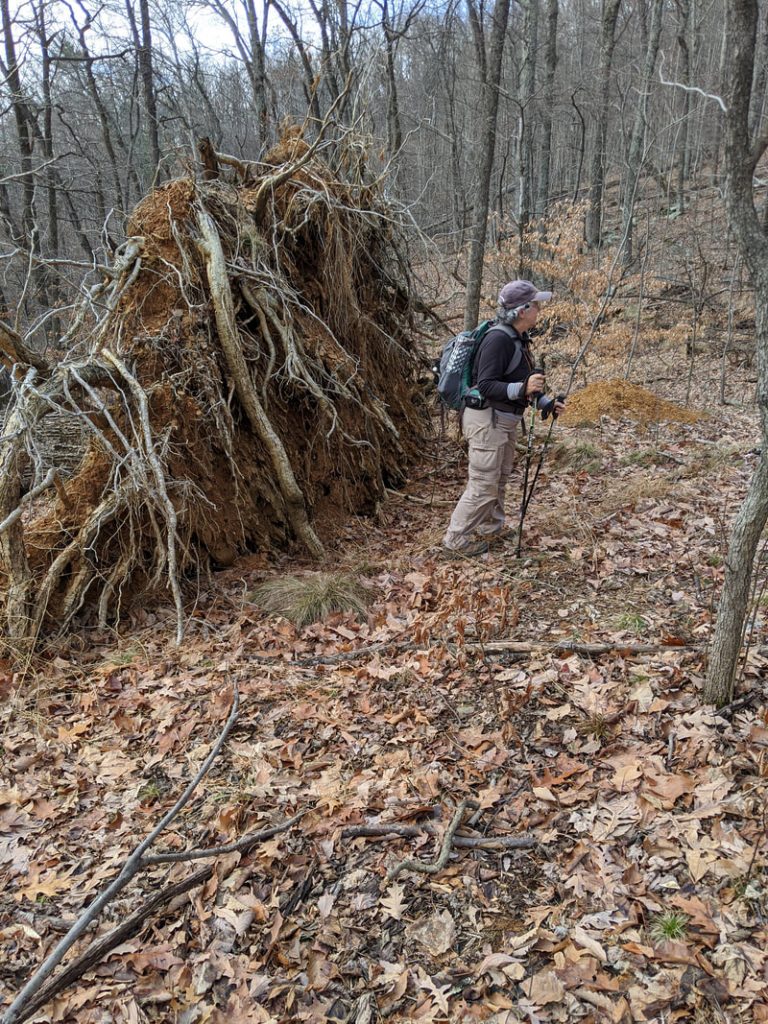
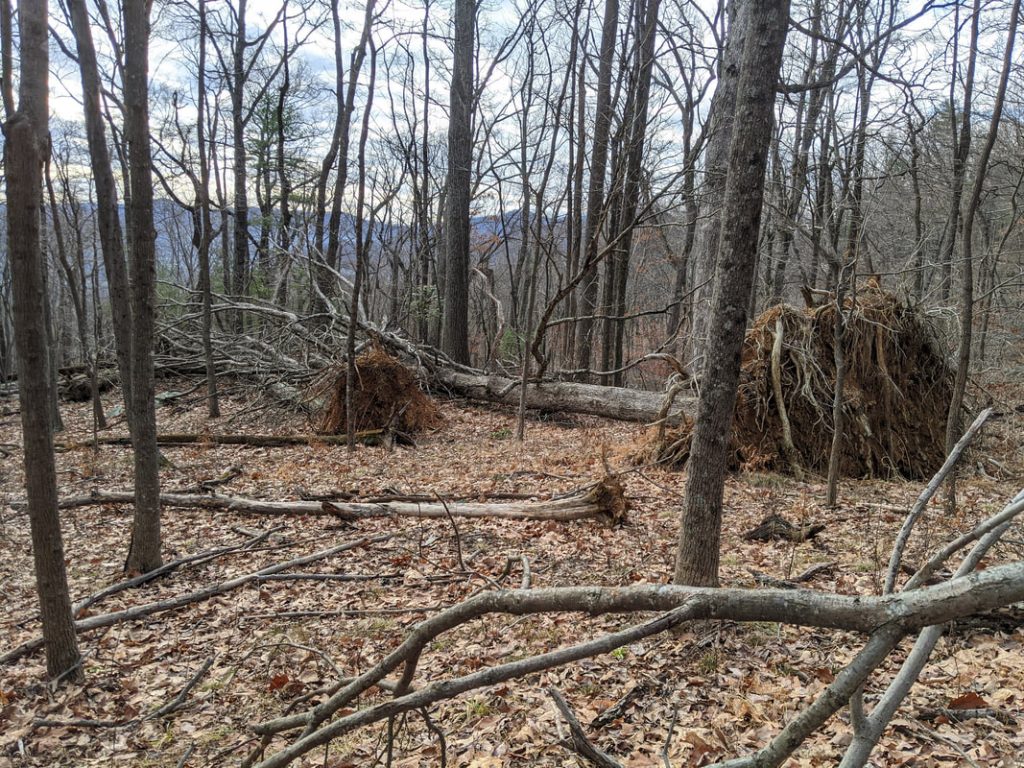
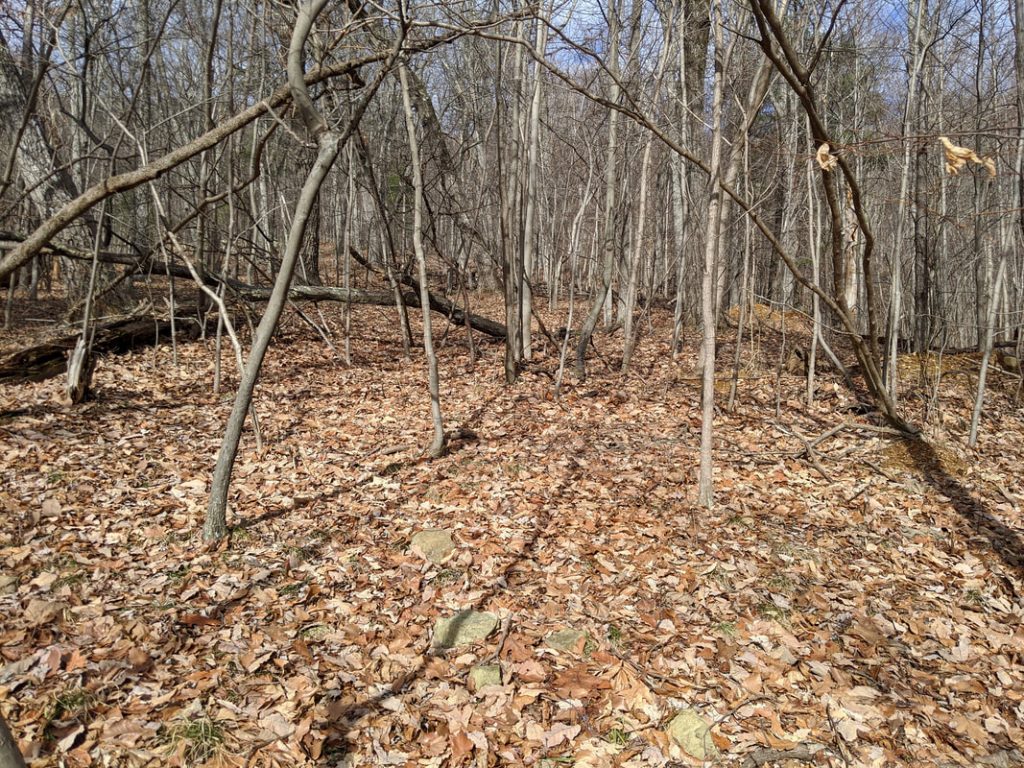
Trees and rocks have a history! Quartz is a silicon-containing mineral that is much harder than most of the rocks in the Blue Ridge. It was created in the magma (melted rock) that made up the Blue Ridge during mountain building six hundred million years ago. Because they are so hard, they survive and can be found on the surface. We find large and small samples of quartz in our yard. I frequently find a piece of quartz around the base of trees and in root balls. The biological action of growing roots helps to break up rock and rock makes life difficult for roots. The last tree looks like a foot stepping on its rock base.
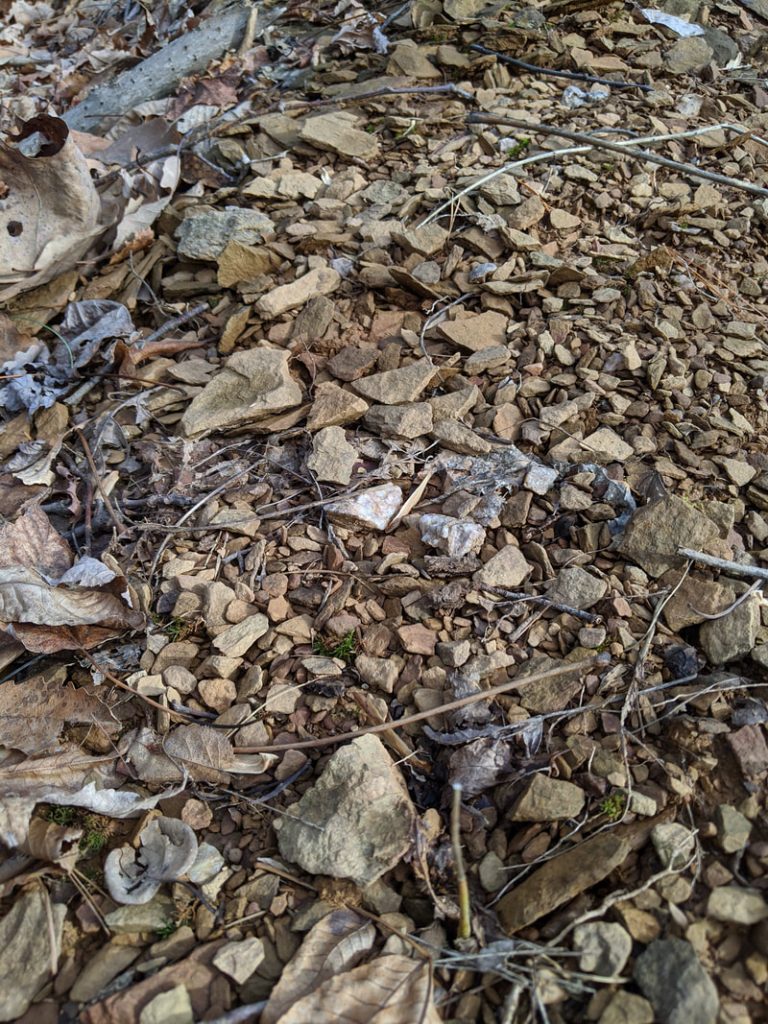
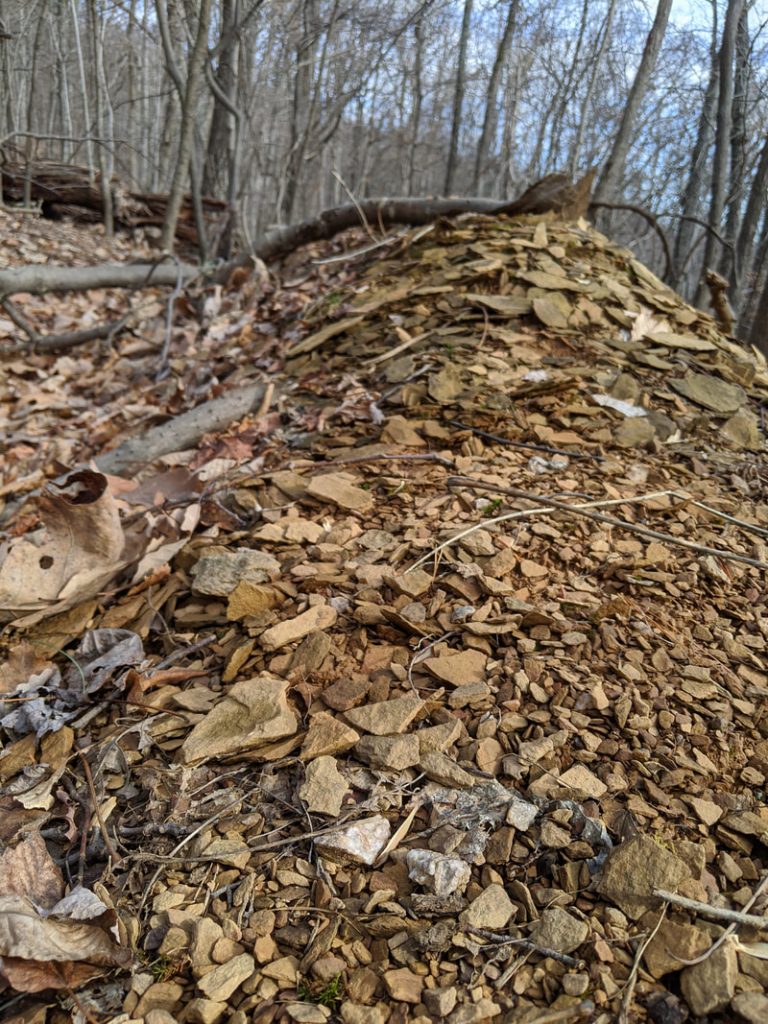
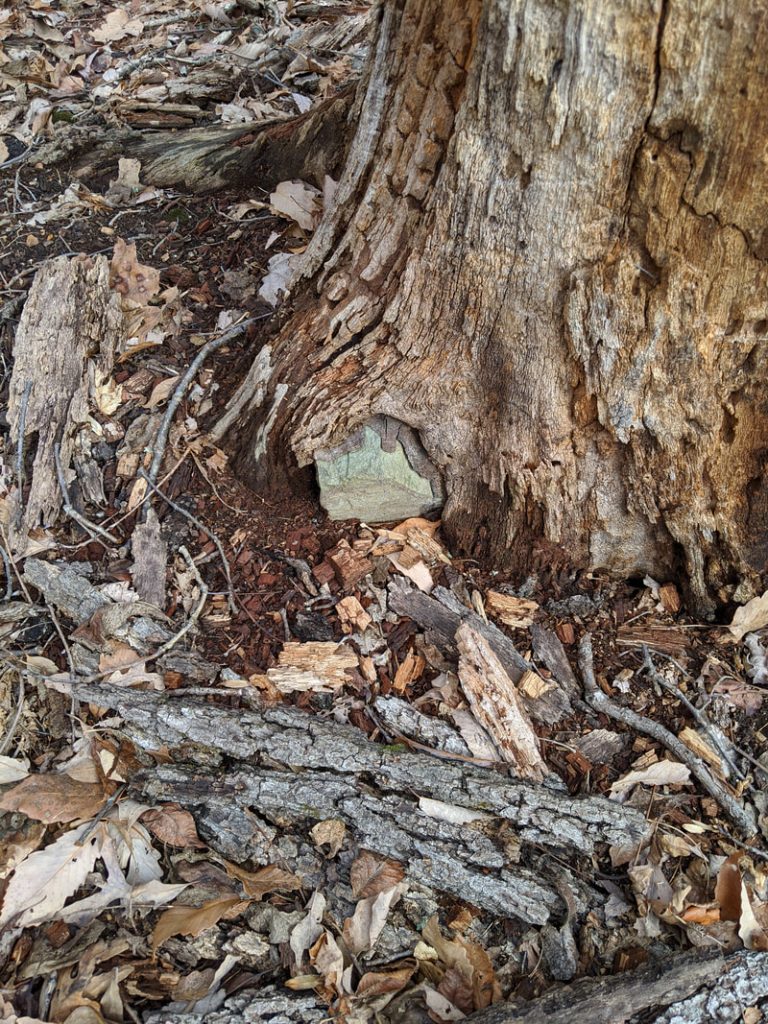
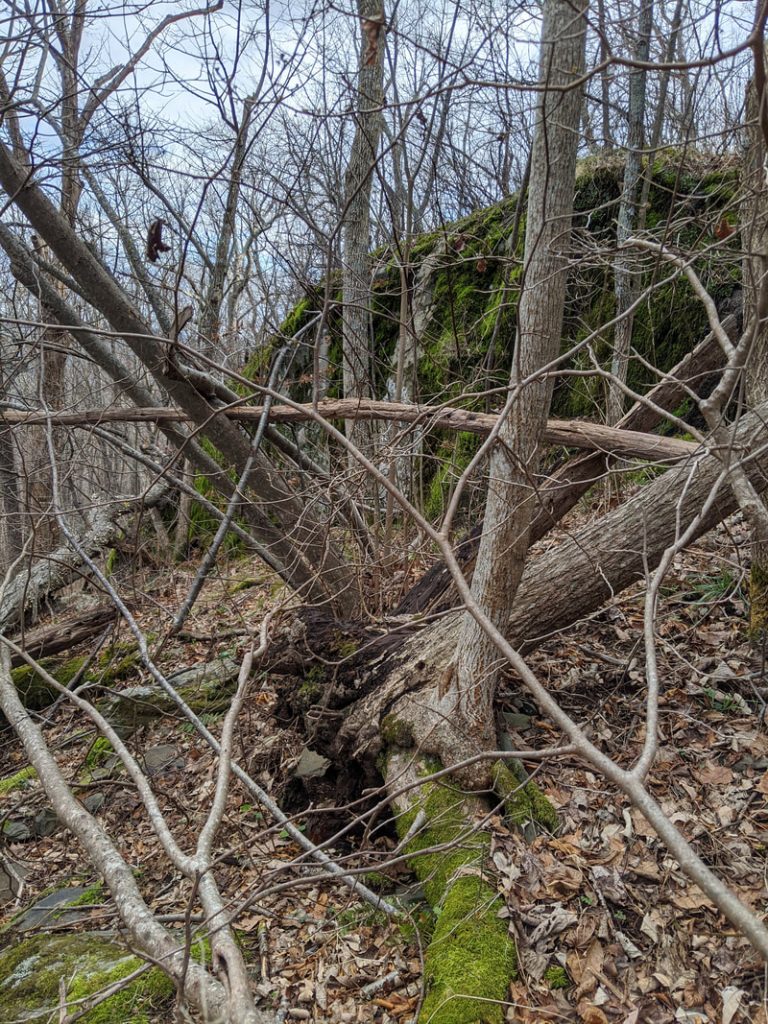

Check this out – this tree appears to be “stapled” to the ground by these roots? Are they extra security from the nearby mother tree?, self created tie down straps? or something darker – a whole other tree invading the nutrient space of this tree? Also note the quartz.
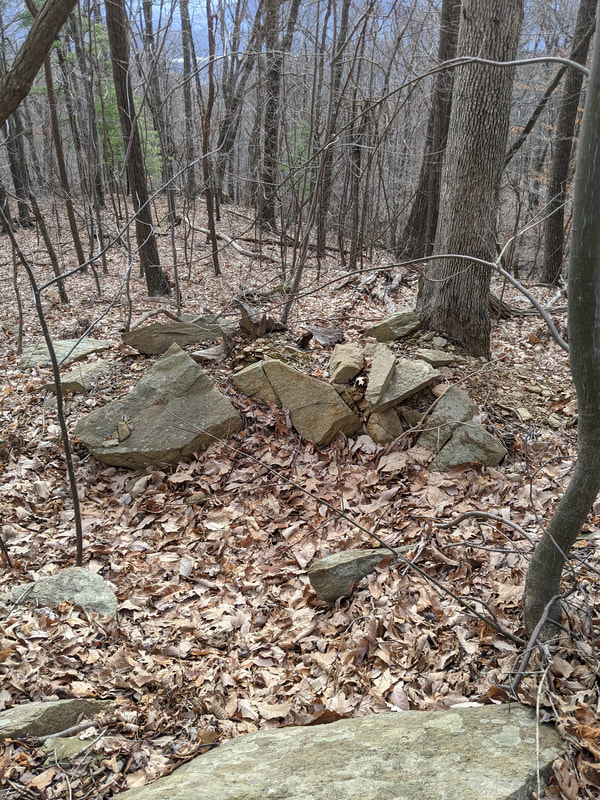
Tree Down! Note the jumble of rocks and the trunk extending down hill. By the way, almost all of the trees I saw today fell down hill. Gravity has the final say!
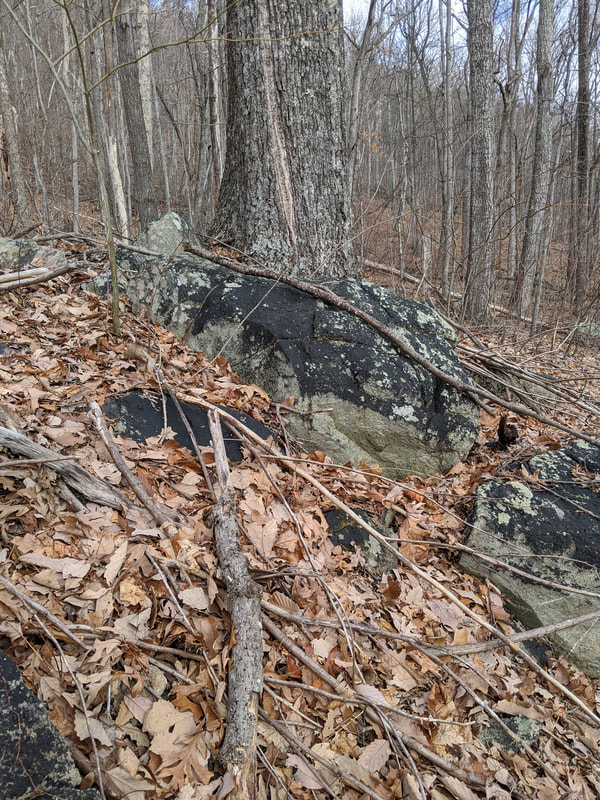
This tree has prospered in a very rocky base. Perhaps we can’t see some great soil below the opening in the rock and the tree is perfectly happy to grow there indefinitely. Also note the linear scar in the tree. Wonder what caused that? Could be lightening! If it does not kill the tree, it can leave a scar like this.
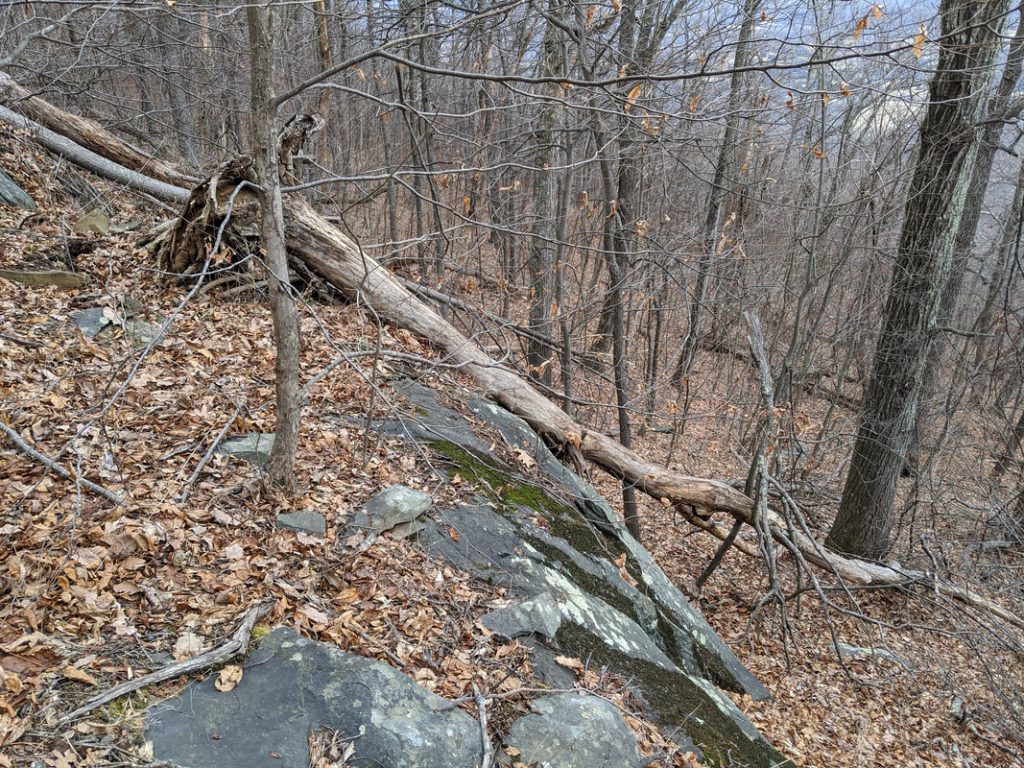
This one started out life at a disadvantage!
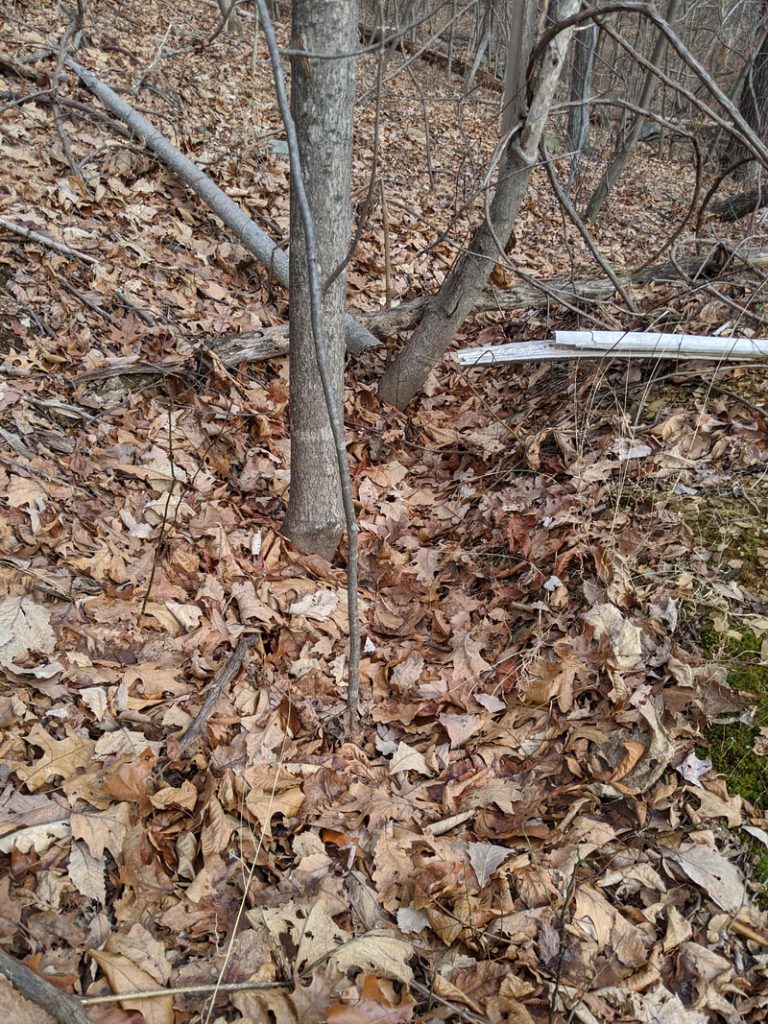
Here is another example of the end of life for a tree giving life to the next generation. These trees sprouted in the disturbed soil of the root ball cavity. Alternatively they could have sprouted from roots of the original tree. Different trees have more or less tendency to sprout from roots. The yellow poplar (Liriodendron tulipifera), which is not actually a true poplar, but a tulip tree, has a strong tendency to sprout from a stump. Also the American chestnut (Castanea dentata) which was essentially wiped out by chestnut blight fungus in the early 20th century and previously comprised 80% of the trees in the Blue Ridge will be seen sprouting from the stump because the fungus only attacks the above ground part of the tree and not the roots.

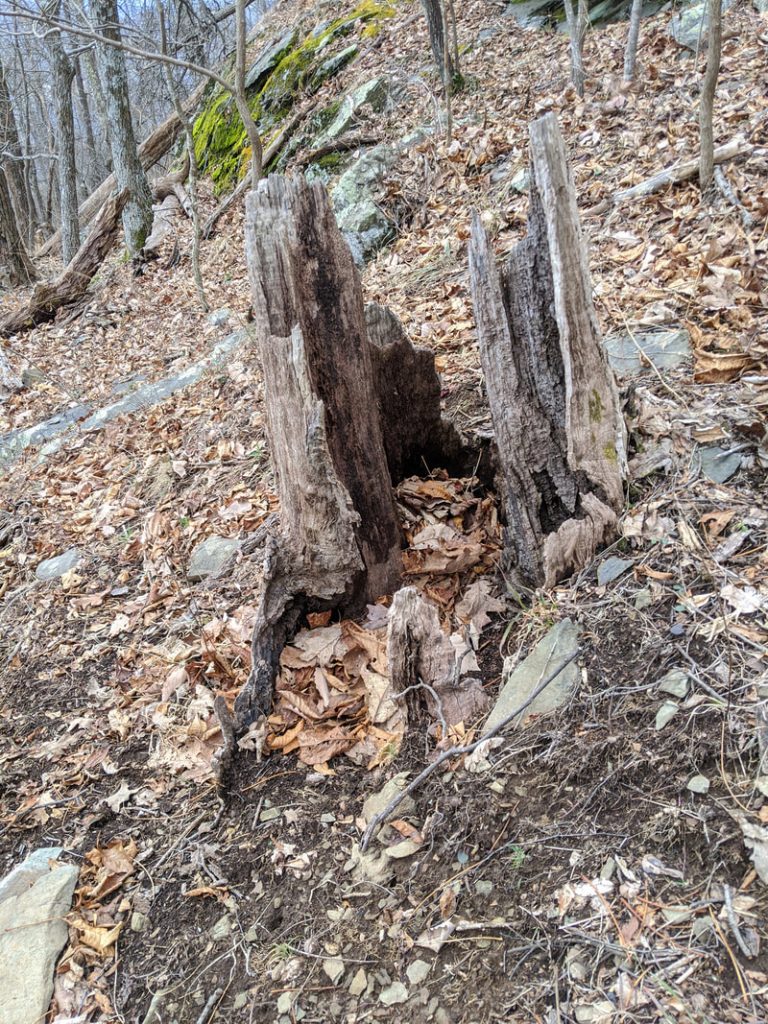
Some trees are attacked from the inside, but continue to grow. The cambium is the outside growing layer of the tree, right under the bark and it contains the xylem and phloem which are the vascular structures which carry sugar made by photosynthesis in the leaves down to the roots and root associated fungi and carry water and minerals up from the roots & fungi up to the leaves. If this layer is intact, the tree can continue to grow for many years. Eventually a windstorm or a downburst will snap it off. Bears in the Blue Ridge do not hibernate which is a metabolic slowing down. Instead they conserve energy during the winter by “denning up”; that is they take to their den and wait for spring. They like hollow trees better than caves because they can press themselves into the cavity and insulate against the cold.
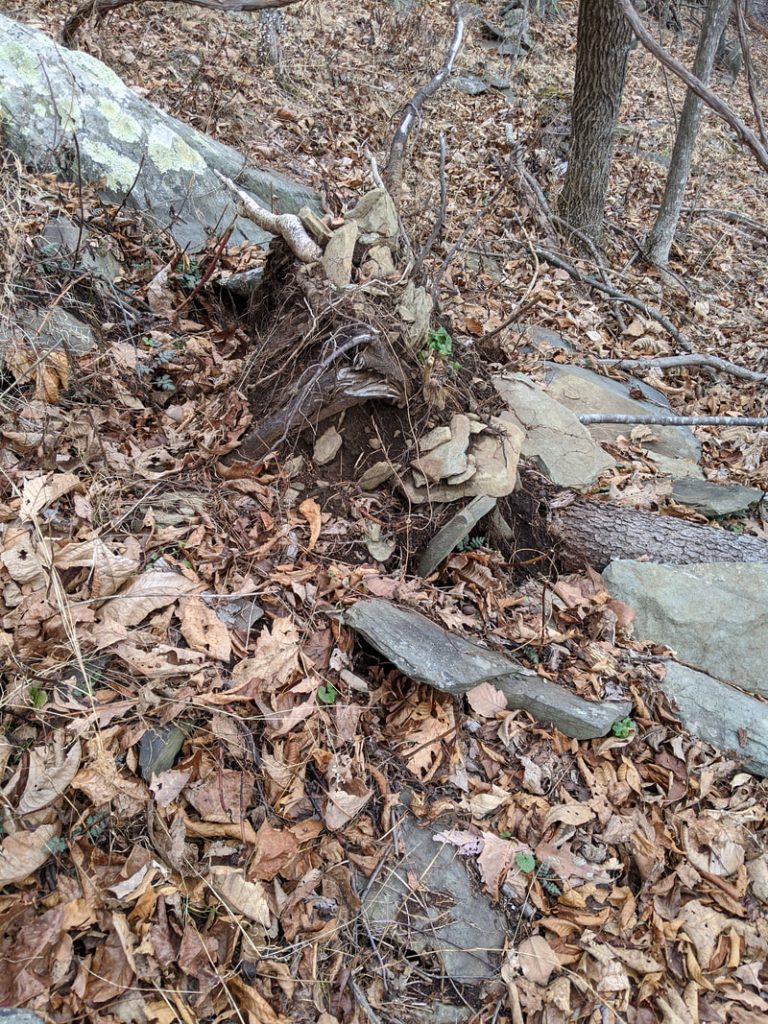
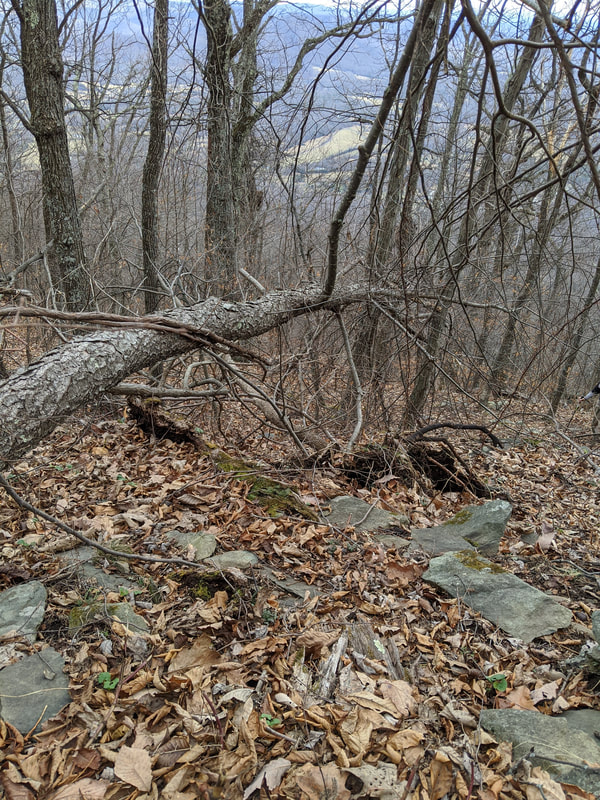

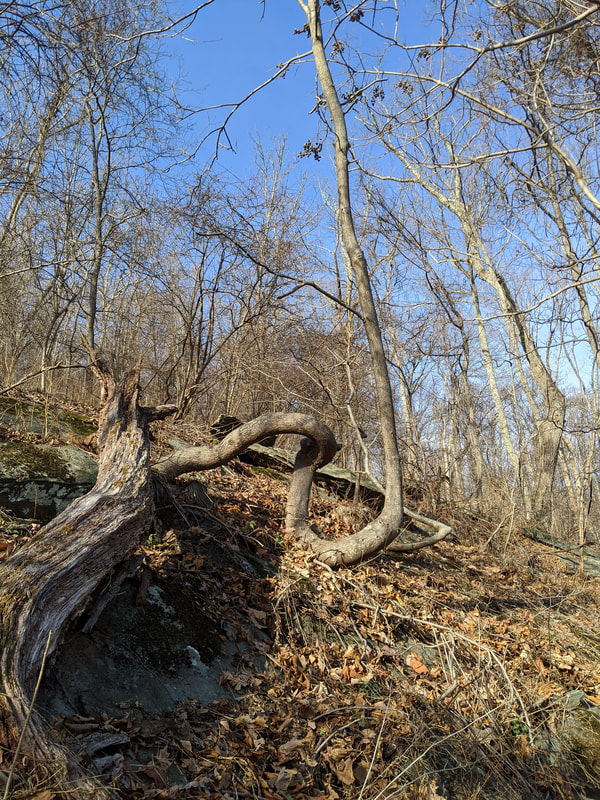
Sometimes when a tree goes down, it does not die. Enough of the roots remain attached and functioning so that if the tree can survive the shock of the event, it can continue to grow. All plants exhibit geotropism – that is they grow against gravity, meaning up! This tree went down, but an enterprising branch made a quick turn and began growing up, allowing the tree to survive. The next photo shows another effect of trees going down. If the falling tree does not push over or snap off a neighboring tree, it may temporarily or permanently bend it over requiring it to kick into its geotropic nature. Talking about adversity! In the last photo it is hard to reconstruct the life of this very resilient tree. Something happened to push it over or bend it more than once, but it still figured out how to grow enough to reproduce! Unfortunately, this very resilient tree is the massively invasive princess tree (Paulownia tomentosa) which is devastating any forest it gets into, and lining I-64 with beautiful purple blossoms but shading out all other growth.
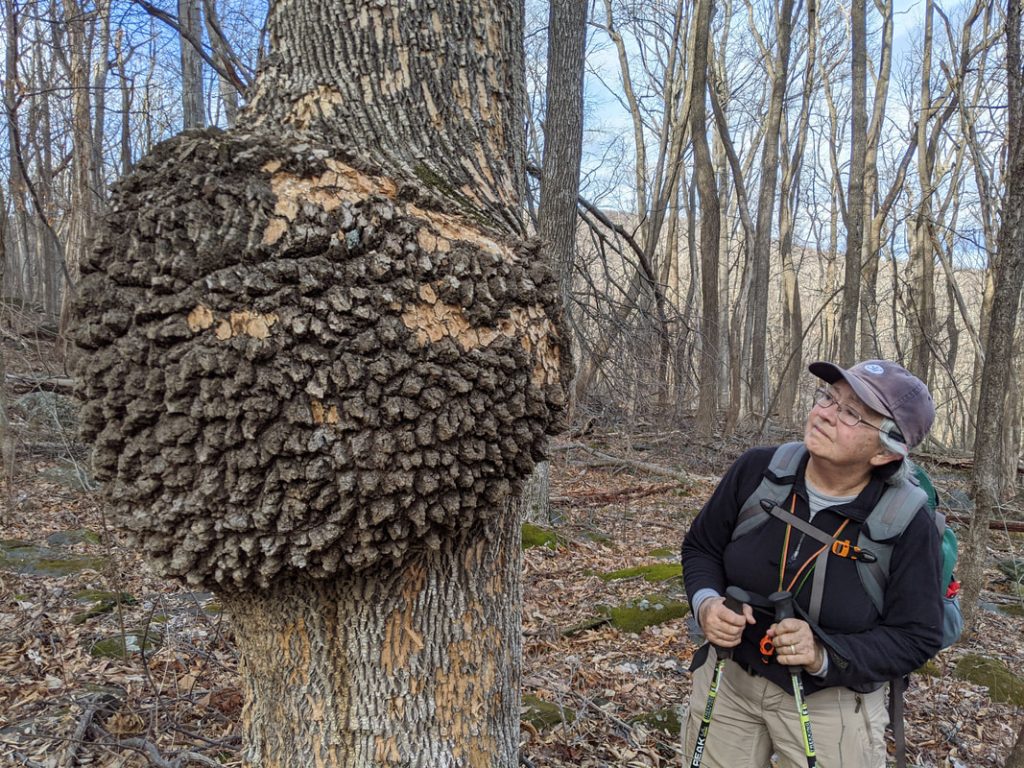
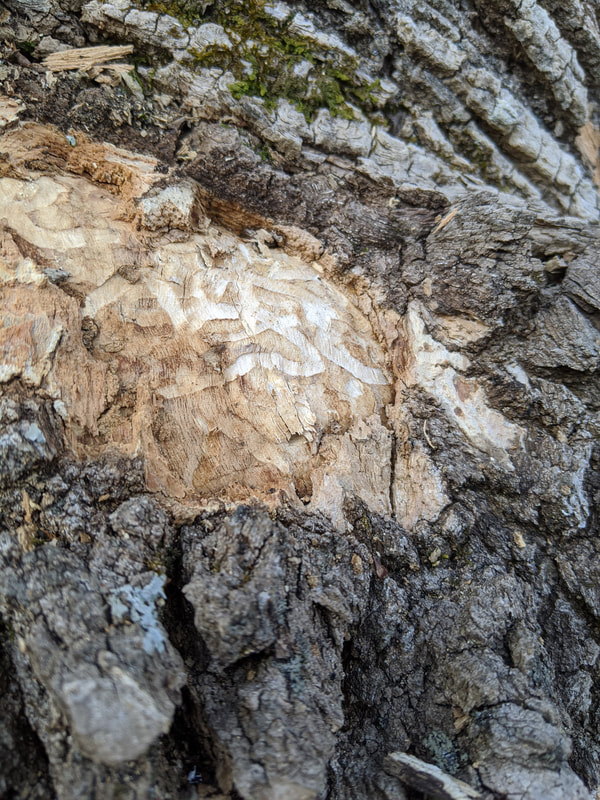
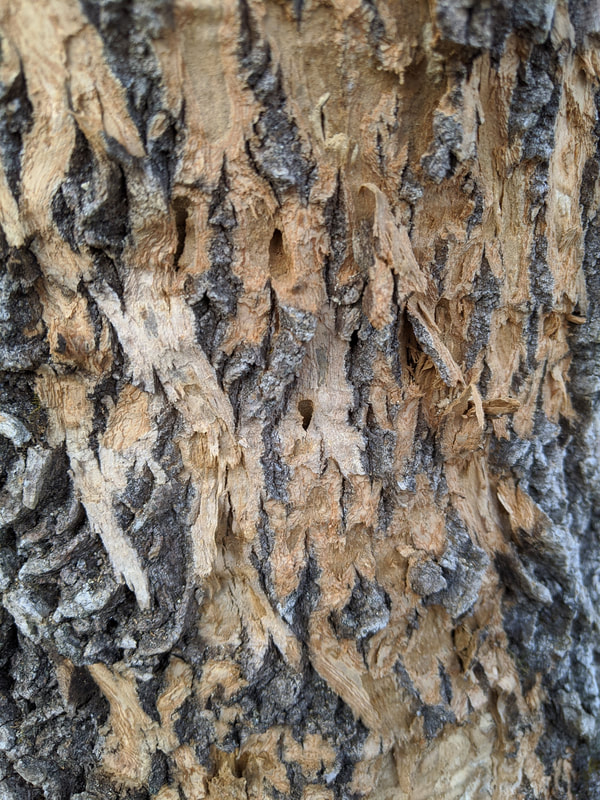
This last tree has two problems. One is lethal and the other a nuisance. The massive gnarly growth with accentuated bark is called a gall or burl. Anything that affects a tree whether it is a physical injury, bacteria, fungi, or a virus can cause this tumor if the tree is susceptible. Fortunately, the burl is usually successful in containing the infestation and a tree can grow for years with gradually enlarging burls. Unfortunately the Asian invasive emerald ash borers (EAB) shown in the other pictures are deadly. They invade the cambium and kill the tree over their 2 year life cycle. In Europe and North America, outside its natural range, EAB is the number 1 killer of ash trees. The eggs are laid on the bark, the larva eat their way into the cambium, create the galleries you see in the second picture, and then exit through a distinctive D-shaped hole as adults to repeat the life cycle.
Although trees do have a hidden life, the visible life and death of trees is a fascinating subject!